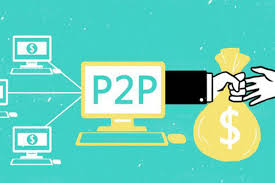
The peer-to-peer lending market in Viet Nam has high potential for development. — Photo ndh.vn
Peer-to-peer (P2P) lending companies expect that the sandbox for fintech would eliminate unscrupulous businesses and help the market grow significantly.
A regulatory sandbox is a framework set up by a regulator that allows FinTech startups and other innovators to conduct live experiments in a controlled environment under a regulator’s supervision.
Prime Minister Nguyen Xuan Phuc has requested the State Bank of Viet Nam (SBV) to develop a regulatory sandbox for P2P lending to help SMEs gain access to loans.
The information was welcomed by fintech firms operating in the sector.
Nguyen Hoa Binh, chairman of NextTech Group, which is operating vaymuon.vn in the P2P lending sector, told Viet Nam News that the nature of the P2P model was very good.
However, due to the absence of a regulatory framework while many Vietnamese start-ups operating in this field have crept up, foreign loan applications have jumped in, hiding under P2P and boosting black credit lending.
“A lack of a legal framework has made Viet Nam a fertile environment for malicious and disguised P2P models, while genuine P2P companies are overwhelmed. Therefore, having a legal corridor, even a piloted one, is essential to protect both borrowers and the P2P businesses,” Binh said.
Statistics from the SBV showed that the country now has 40 P2P companies. However, in reality, there are more than 100 apps operating under the P2P model. Of which, 70 per cent are operated by foreign firms.
These apps advertise to operate under the P2P model, but are actually offering ‘black’ credit, like the Cashwagon app that was discovered by police in early June.
“The potential for development of the P2P market in Viet Nam is huge due to high demand of borrowers. In fact, this model is not new, but has existed for thousands of years in the form of borrowing from relatives and friends.
"P2P is just the “digitalisation” of this relationship. The introduction of this model, if well managed, would promote comprehensive finance, giving people, households and SMEs more opportunities to access financial services at low cost and with less procedures,” he added.
However, he said each model has its own risks. For P2P, the biggest risk comes to investors or lenders.
“The sandbox should be soon promulgated to screen the market. P2P companies also need to improve their clients' appraisal and credit rating before transferring that opportunity to investors. P2P businesses with good appraisals would be able to control investors' risks,” he added.
Economist Nguyen Tri Hieu said a lack of a legal corridor is causing turmoil in the P2P market. Many online loan applications impersonate P2P and disruptive activities, causing consequences for this form of lending.
“It is necessary to introduce a sandbox for the P2P model. However, in my opinion, it should only be tested for one year, instead of extending to two years as in the current draft of the central bank.”
He added the issuance of the sandbox would help purify the P2P market, provide authorities with the basis to handle dozens of disguised black credit apps and firms impersonating P2P.
He also agreed that the P2P market in Viet Nam has big potential because there are many people who do not have access to formal credit. With the advantage of quick disbursement and no mortgage required, P2P is an effective capital channel for low-income people.
Economist Can Van Luc said P2P is vital trend of a digital economy and would strongly develop in Viet Nam. P2P is socialising credit services. This was the reason why the sandbox would help better protect investors and borrowers while increasing opportunities to access loans.
P2P in Viet Nam still has a lot of room for development, which is necessary to complement credit and financial companies.
The banking system would be extended to remote areas thanks to the agent network. However, this system of agents only performs a limited number of operations and cannot replace banks for credit development. In other words, with nearly 100 million people in Viet Nam, the P2P market is still very attractive. — VNS